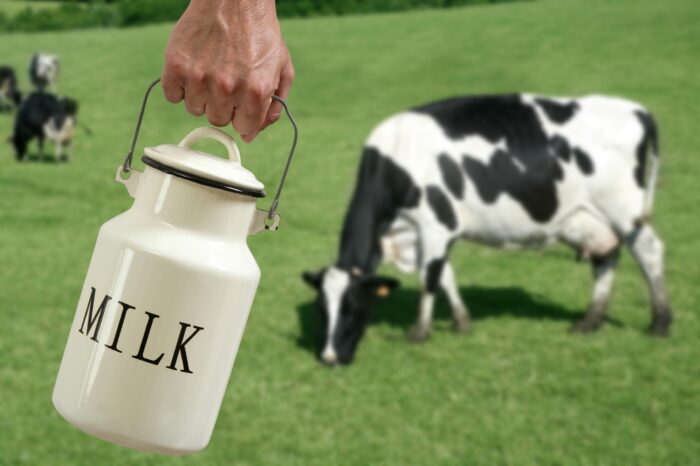
It is an undeniable fact that milk is a highly nutrient-rich product. Milk contains more protein needed for the formation of new cells than fish and meat. Moreover, breast milk is ideal for a baby under 12 months. It saturates a child’s body with all the necessary nutrients in the best possible way.
But with the protein of cow’s milk, the immature enzyme system of the infant may have difficulty. Cow’s milk should be gradually introduced to the baby’s diet, and parents need to choose what kind of milk to offer a baby carefully.
Pediatricians never tire of repeating the immutable truth that breast milk is the best food for the baby. There is no need for milk other than breast milk until 12 months. However, circumstances are different, and if the baby cannot have breast milk for some reason, parents can choose a quality organic formula on organicsbestshop.com
The difference between cow’s milk and breast milk
Cow’s milk differs significantly from breast milk in both quality and nutrient content. Regarding nutrients, whole cow’s milk contains more proteins and minerals (calcium, sodium, phosphorus, chlorine, magnesium, and potassium) and fewer carbohydrates, essential fatty acids (linoleic and a-linolenic acids), and long-chain polyunsaturated fatty acids, iron, zinc, vitamin C and niacin.
Not only does cow’s milk have more protein, but its quality is different from breast milk, and the proteins in it can potentially trigger an allergic reaction in babies.
Why is it better not to feed infants cow’s milk?

The baby’s digestive tract is not sufficiently developed to be able to fully digest cow’s milk like breast milk or infant formula. The proportion of casein in milk products is so high that the immature tummy cannot fully digest it.
In addition, cow’s milk is high in minerals, which puts an excessive load on the immature urinary system of the child. Also, the baby’s kidneys are in constant overload, trying to process a large number of micronutrients.
Cow’s milk may provoke the development of iron deficiency anemia in a baby’s diet under one year old because dairy products prevent the proper absorption of iron. There is also an excess of sodium in cow’s milk.
It is three times higher than in breast milk. This can cause allergies in the baby. The risk group includes kids whose family history has people with diabetes because dairy products can provoke the development of the disease at a very young age.
The appropriate time to introduce cow’s milk from a nutritional standpoint is when the baby turns one year old. It is important to remember that this process should happen gradually. Better to start giving your baby not just milk but milk-based porridge. By and large, it does not matter what kind of porridge it will be, and the most important thing is that the baby likes it.
Why do babies need the formula and not cow’s milk?
There are many alternatives to cow’s milk in the form of baby formulas. Most of them are made from cow’s milk, modified to meet the baby’s nutritional needs. But it is not the same as cow’s milk. Also, babies cannot digest cow’s milk as completely and easily as breast milk or formula.
The main thing is that infant formula is as similar to breast milk as possible and contains many vitamins, minerals. Instead of casein, the formula contains whey protein, indispensable for babies under six months of age. Lactose helps the absorption of calcium and iron and improves digestion.
Probiotics destroy harmful microflora in the gut and repopulate it with beneficial ones. Prebiotics improve digestion and immunity. For babies prone to frequent regurgitation, there are formulas with higher gum or starch content. As for the choice of a particular formula, it is better to see a pediatrician, who will take into account the baby’s age and individual nutritional needs to recommend the most suitable option.
Composition of cow’s milk

- The composition of cow’s milk is balanced for the developed digestive system and contains almost all the essential nutrients:
- Protein – easy to digest and contains eight essential amino acids, which are not produced by the body but must necessarily come with food;
- Fats – contain polyunsaturated fatty acids, which are also essential for the normal development and functioning of the nervous system. In addition, there are a variety of fat-like compounds necessary for the regulation of metabolic processes in the body;
- Carbohydrates – milk sugar lactose, which, in addition to being the main source of energy for the growing body, and also support the growth of beneficial intestinal microflora;
- Trace elements – iron, potassium, calcium, magnesium, phosphorus, sodium, copper, and cobalt;
- Vitamins – A, C, E, K, PP, folic acid.
There are a few rules to follow when introducing milk into the infant’s diet:
It is better to give milk in the first half of the day. This way, you will have more time to assess the child’s possible reaction to the new product. If you give your baby milk in the evening, a possible allergic reaction could occur at night, which is extremely dangerous in case of fever.
It is not recommended to give any other new product on the same day, as in this case, you will not know which product your baby is allergic to. If you use milk to prepare milk porridge, dilute it with warm boiled water to reduce the product’s fat content. Gradually increase the amount of milk only if the baby tolerates it well.
When choosing dairy products for a toddler, there are several important aspects to consider:

Manufacturer It is better to give preference to a proven manufacturer who cares about the quality of its products. Shelf life Optimal is the storage of such a product for not more than ten days. Always check the shelf life of milk not to be expired because it can provoke serious food poisoning.
Baby’s age If there is a mark on the package that the product can be given to children from 3 years old, it is better not to take the risk and choose a dairy product for a younger age. Fat content Such an indicator should not exceed 3.2% if the milk is used for healthy term infants.














